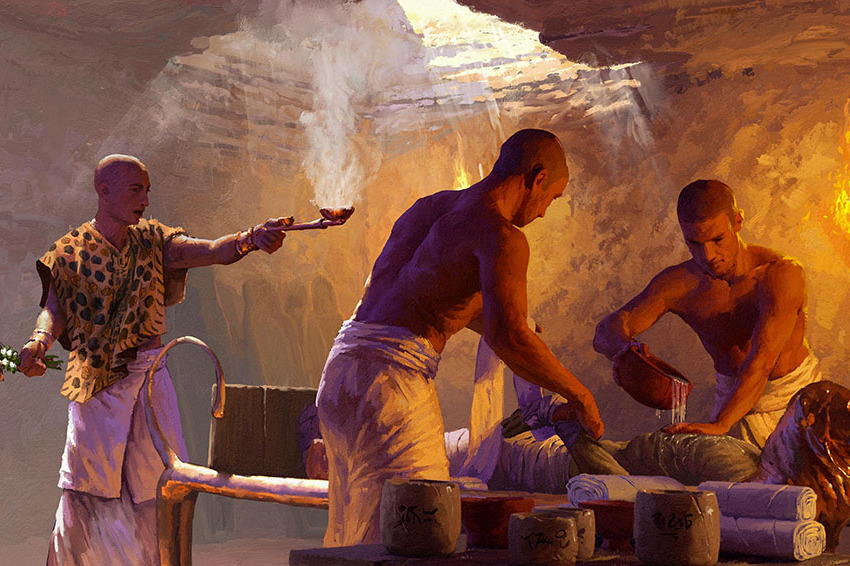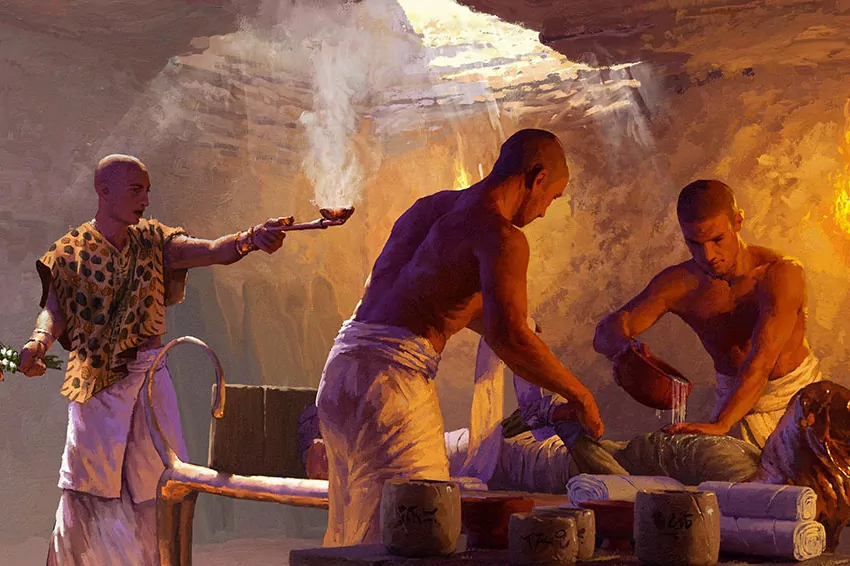

(c) Science
New analysis of containers unearthed at a more than 2,500-year-old embalming workshop reveals that the ancient Egyptians used a variety of exotic ingredients – some of which were apparently imported from as far away as Southeast Asia – to mummify their dead.
Wednesday, February 2nd, researchers unwrapped the results of biochemical analyses of 31 ceramic vessels that once contained embalming substances at the archaeologically-rich Saqqara site near Cairo, deciphering the chemistry of the mummification practice used for millennia to prepare Egypt’s dead for the afterlife.
The ancient Egyptians believed that the preservation of the body after death was essential for a prosperous afterlife. Before the body was wrapped, various substances, with roughly a dozen identified in this study, were applied to preserve human tissue and prevent decomposition odor – long before the understanding of microbial biology.
Certain embalming substances listed in ancient texts have been the subject of speculation by scientists over the past two centuries. Nonetheless, this workshop, discovered in 2016 by the late Egyptian scientist Ramadan Hussein near the ruins of the even older pyramid of Unas and step pyramid of Djoser, contained beakers and bowl-shaped vessels labeled with the ancient names of their contents, sometimes with instructions such as “to place on his head.”
The containers were analyzed for chemical residue by the researchers.
Many items, including cedar oil, juniper and cypress oil, tar, bitumen, and olive oil, originated in the eastern Mediterranean region. The real surprise, however, was the presence of substances originating from Southeast Asian forests thousands of miles away. There was gum from the dammar tree, which grows only in Southeast Asia and tropical Africa, and resin from the elemi tree, which originated in Southeast Asia or tropical Africa.
The subterranean workshop for embalming was accessed by a hole that was 40 feet (12 meters) deep. It dates to Egypt’s 26th dynasty, often known as the Saite era, from 664-525 B.C., a time of regional Assyrian and Persian dominance and diminishing Egyptian supremacy. This was around two millennia after the Giza pyramids were constructed during the Old Kingdom period and six centuries after the reign of pharaoh Tutankhamun, whose mummy and fantastic funeral items were discovered in 1922.
Maxime Rageot, a biomolecular archaeology specialist at the University of Tübingen in Germany and co-author of the study, stated, “There have been countless studies on Egyptian embalming, but our lack of knowledge on which substances are behind the different names and the absence of any practical descriptions have impeded any further understanding.”
In ancient writings, the term antiu, which referred to an embalming material, has long been interpreted as the resins frankincense and myrrh. This investigation indicated that it is a combination of cedar oil, juniper and cypress oil, and animal fats.
For embalming the skull, three recipes using components such as elemi resin, pistachio resin, juniper or cypress derivatives, and beeswax were found. Other recipes were utilized for softening the skin or cleansing the body.
Stockhammer stated, “They knew how to select and combine antimicrobial substances, which allowed for perfect skin preservation.”
“There are still mysteries to uncover.” Susanne Beck, an Egyptologist from the University of Tübingen and co-author of the study, said that modern approaches make it feasible to cast fresh light on some features utilizing not just newly discovered artefacts, such as the jars from Saqqara, but also objects held in museums and collections.
Early Tuesday morning. The fire, which could be seen from several miles away, caused mass evacuations as the authorities fine-tuned…
OpenAI's new image creation option on ChatGPT attracted many users in a short time. ChatGPT achieved its one million user…
Yuki Tsunoda has targeted a dream podium at his home Japanese Grand Prix following his surprise elevation to Red Bull.…
Finally, it is out! Tom Holland will return to the red and blue suit as Marvel formally launches the title…
Turkish music lovers and the whole entertainment world on Sunday night were put in shock by the unexpected passing of…
The Senior Asian Wrestling Championship 2025 held in Amman closed with an exhilarating finale for India. The freestyle wrestling contingent…
This website uses cookies.
Read More